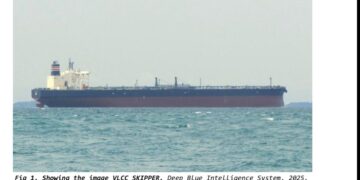California’s Port of Oakland could soon see the return of
bulk shipping operations at the site for the first time in 20 years.
bulk shipping operations at the site for the first time in 20 years.
The port
has entered into negotiations with Vancouver-based Eagle Rock Aggregates,
building materials shipper, to transport sand and gravel from British Columbia
to Oakland.
has entered into negotiations with Vancouver-based Eagle Rock Aggregates,
building materials shipper, to transport sand and gravel from British Columbia
to Oakland.
The firm
seeks a vessel berth along with 20 acres of adjacent land at the port’s Outer
Harbor Terminal.
seeks a vessel berth along with 20 acres of adjacent land at the port’s Outer
Harbor Terminal.
Eagle
Rock is looking to secure a 15-year lease for one berth on Outer Harbor, which
would be used as a base for distributing sand and gravel for Bay Area
construction sites.
Rock is looking to secure a 15-year lease for one berth on Outer Harbor, which
would be used as a base for distributing sand and gravel for Bay Area
construction sites.
Oakland,
one of the busiest container seaports in the U.S., handled the equivalent of
2.5 million 20-foot containers last year. However, if agreed, the bulk shipping
contract would not hamper container operations as the port does not envision
using the property for container handling until 2035.
one of the busiest container seaports in the U.S., handled the equivalent of
2.5 million 20-foot containers last year. However, if agreed, the bulk shipping
contract would not hamper container operations as the port does not envision
using the property for container handling until 2035.
Nearly
1,300 acres are devoted to containerized cargo, while the Outer Harbor Terminal
is currently used for container-related activities as well as berthing for
vessels in lay-up for extended periods.
1,300 acres are devoted to containerized cargo, while the Outer Harbor Terminal
is currently used for container-related activities as well as berthing for
vessels in lay-up for extended periods.
“This is an opportunity for us to perhaps
diversify our business,” said John Driscoll, the port’s Maritime Director.
diversify our business,” said John Driscoll, the port’s Maritime Director.
“We’ve built the Port of Oakland to be a
global gateway for containerized cargo but a steady, divergent revenue stream
could be beneficial.”
global gateway for containerized cargo but a steady, divergent revenue stream
could be beneficial.”
Oakland
abandoned bulk in 1999 by adopting Vision 2000, a totally containerized cargo
strategy.
abandoned bulk in 1999 by adopting Vision 2000, a totally containerized cargo
strategy.
World Maritime News






























































